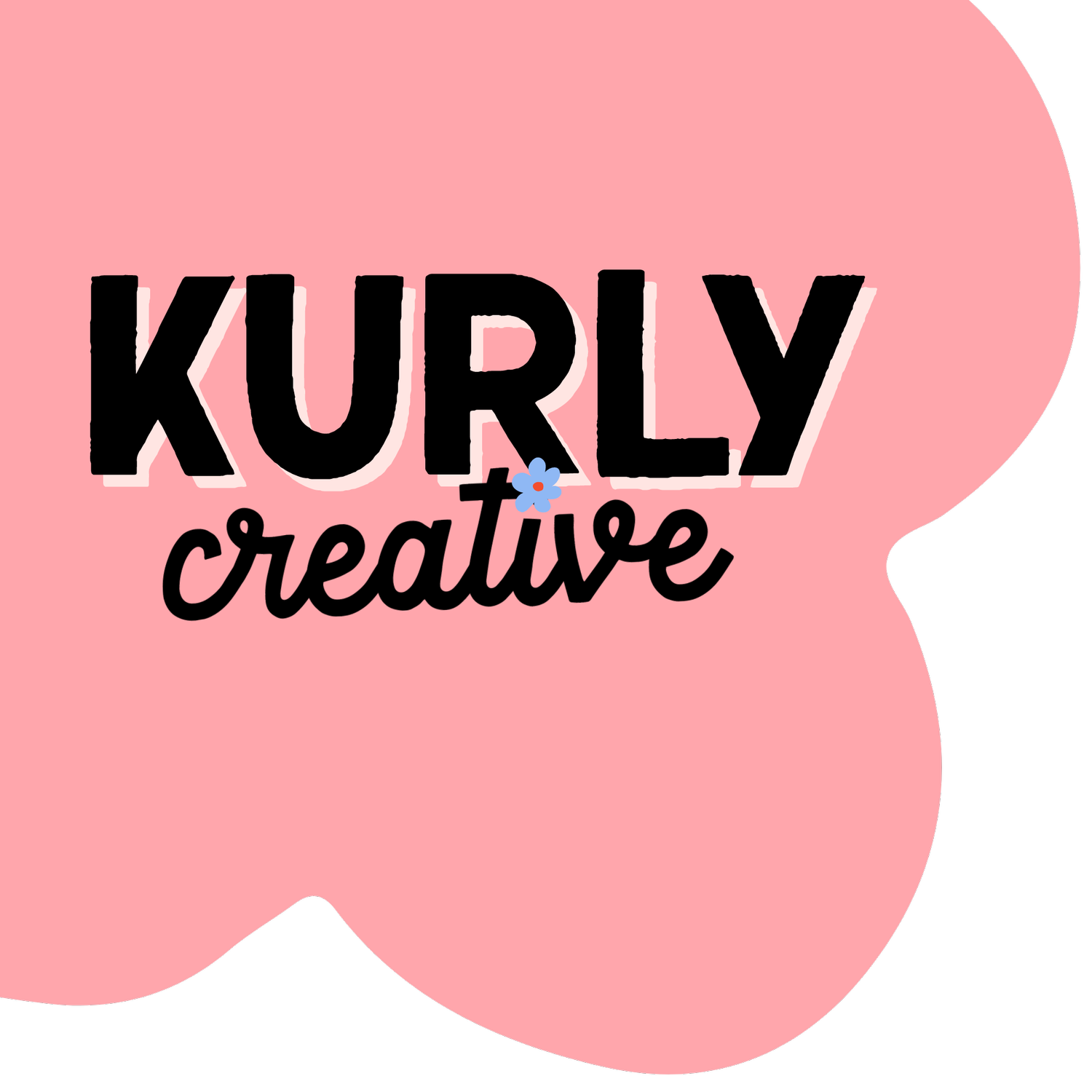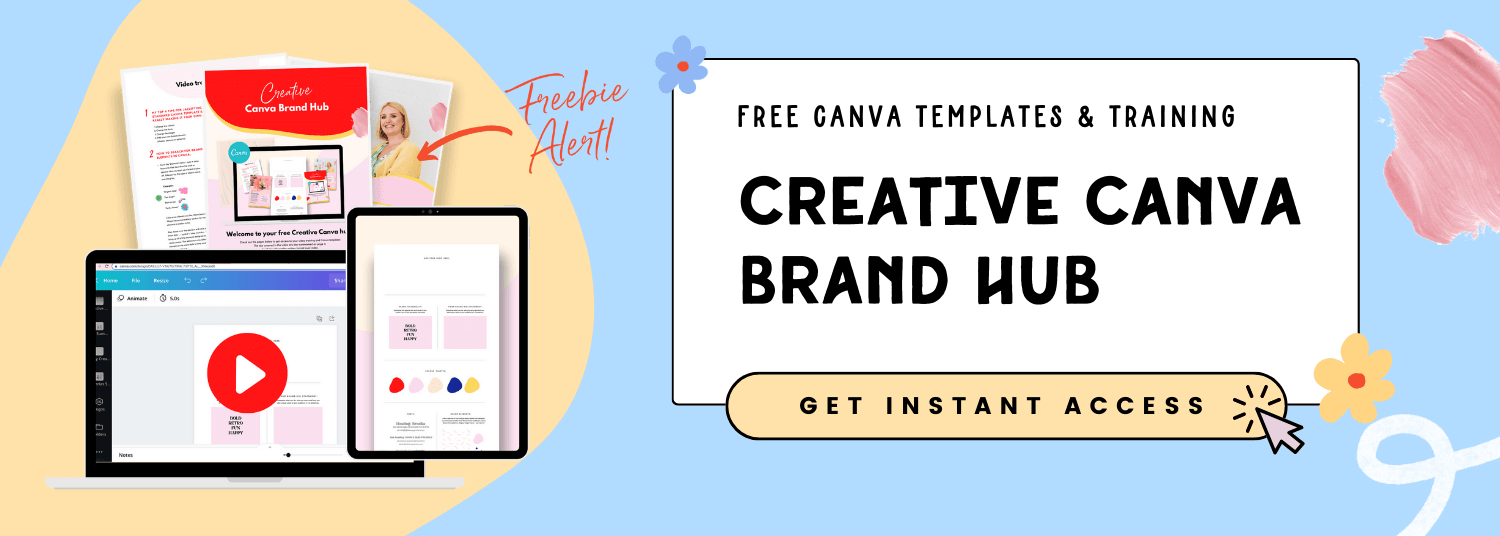What are branding elements and why are they important?
If you've been looking into the world of brand design, you’ve probably come across some unfamiliar lingo, including the phrase "branding elements". But what are branding elements?! Let me answer that for you. Branding elements are like the coffee, creamer, syrup, ice, and reusable straw that make your iced Starbucks latte taste so good, or in this case, make your brand so appealing to your ideal customer.
You may have heard the phrase many times before: your brand is so much more than your logo. Well, don’t me wrong, I’m pretty tired of hearing it myself, but it gets repeated time and time again for a reason - because it’s so true! Your logo is just one tiny piece of the branding puzzle. In my (probably very unpopular) opinion, your logo is actually not all that important in comparison to the other branding elements that make up an effective, unique brand.
Today, we're going to be talking all about the essential elements that go into building a brand that stands out, what branding elements are, and why they're so important for your visual brand identity.
What are the key elements that make up a successful brand?
Before we get started with all the fun branding elements, we need to take a step back and talk about the strategy that goes into crafting every corner of your unique brand elements. We aren't talking so much about visual elements here, I mean all the pre-work that goes into building a brand based on strategy instead of personal preferences. Let's chat about five areas of building a brand that aren't so much related to design as they are to strategy.
Messaging - brand messaging is the unique way in which you share with your audience how your business is different and how you can help solve the biggest problems of your ideal client. Crafting an intentional brand message will build brand awareness and help people recognize your content before they even see your brand name or logo!
Values - each of us started our business for our own reasons, and with our own stories come our own unique values. When you craft a unique set of brand values, you have pillars to lean on in all the work you do. They can also help you attract customers who resonate with your way of doing business! For example, a business who values providing a luxury experience for clients may attract a different target audience than someone who values playful and casualness.
Tone of Voice - this is the way in which you speak and write when doing so for your business. For example, Toyota and Tesla both sell cars, but you can tell that they market to a different group of people based on the way in which they speak and write. Having an assigned tone of voice will make writing for your brand easier and will help your words match the designs you choose for your brand. Speaking in an up-tight and professional manner while using bright colors and fun patterns may confuse your target audience, while a casual and personal tone matched with bright colors and fun patterns would make more sense!
Brand Positioning - this is how you differentiate your business from your competitors. Your brand positioning can be summarised into a few sentences and can act like an internal mantra that you use to string together everything you do in your business to maintain consistency. Brand messaging is what helps differentiate Pepsi from Coca-Cola, and when they use this unique brand positioning to write ads, film commercials, and market their products, they convince you to buy from them. Brand positioning is one of the reasons why, as you read the brand names "Coca Cola" and "Pepsi", you automatically choose one over the other.
Visual brand Identity - last but not least, we come to one of the most obvious key elements of your brand, the actual designs that visually represent your business! Your brand identity consists of all the visual branding elements we're going to talk about in just a minute. This includes your logo, icons, submarks, patterns, packaging, colours, fonts, and imagery. The most successful visual identities are crafted with your brand messaging, positioning, values, and tone of voice clearly in mind.
Whew, who knew so much goes into creating a stunning brand?! Now that we have the foundation and frame built for our house, we can focus on turning it into a home through strategic brand elements.
Are you a newer business owner who’s DIY-ing your brand?
Go check out the Creative Canva Brand Hub. This freebie is chock full of Canva templates and video trainings to help you create your very own collection of brand elements right in Canva, so you can start standing out online in your own unique way. Get immediate access below 👇👇
What are branding elements?
As well as the key elements that make up a full, holistic brand identity, there are also some key elements (also known as branding assets) that make up the visual brand identity. Here's a run down of 7 different aspects that can make up a brand identity.
Logos - while many consider a brand's logo to be at the center of the brand, I disagree. However, a logo can be one of the most useful and identifiable marks of a business! A logo represents your business, what you stand for, and the services you offer. It can be whatever you want, as long as you ensure that it lines up with the rest of your brand positioning and will attract your target audience.
Sub-logos/marks - these are all the fun little logo variations you can sprinkle throughout the internet to showcase your brand to the world. You can use submarks in profile pictures, letterheads, packages, your email signature, and the list goes on!
Icons - icons are brand elements that go hand in hand with your submarks and main logo. You can use them on your website when outlining services or your process, Instagram highlight covers, and social media graphics. Icons help you customize your brand further so that instead of copying and pasting the exact same icons as everyone else, you can show up with a unique approach.
Patterns - patterns are a fun way to completely take advantage of your brand's potential and customize your online presence to the fullest extent. If you work with a professional designer, they might even create custom brand patterns with hand drawn elements, showing the amount of care and precision that designers put into their work.
Colours - believe it or not, even your colour choice can influence the decisions of your ideal client! Some brands want to motivate people and make them excited, others want to soothe and calm. Depending on the emotions you want your brand to evoke and the level of casualness or professionalism you're going for, your colour choice can reflect these feelings. Put together a moodboard (you can learn how by clicking here) and look at the colours the images have in common. You can use these as inspiration for your colour palette!
Fonts - just like colours, fonts have the ability to evoke emotions. On principle, designers try to choose no more than three fonts - one for headings, one for body text, and one accent font. You can see this principle in play on my website...
Images - Sourcing stock photos can be loads of fun, but before you get ahead of yourself, remember that the images you use are one more brand element that can help people recognize your brand throughout the Internet! Sometimes the best way to do this is by paying for a stock website subscription from a fellow small business owner or investing in a brand photographer who will give you stunning headshots and completely custom stock photos that you can use to represent your brand.
If you’re keen to learn about the meaning behind some other brand and design terms - check out this blog post: Brand and design terms explained.
Why are these key branding elements important?
We've answered the question: what are branding elements? Now, we need to focus on why they’re important. Branding elements allow for a one-of-a-kind brand to showcase your personality that sticks in the minds of your consumers! You'll be able to connect with and attract your dream customers through every touchpoint of your brand they come in contact with.
With this thoughtful approach to branding, you can set yourself up for success and growth with a clear focus in business through the strategy and marketing plans you put together in the beginning. This means that you'll become the go-to expert since you created a brand that builds trust and credibility! Last but not least, custom branding elements are important because they give you versatility to use your brand all over. For example, the logo variation you include in your profile picture on social media is going to be different from what your business card looks like. By investing in branding elements, your brand designer will make sure your brand has the flexibility to show up across the entire online space while still looking professional.
Are you ready to invest in a professional brand to make all this happen for your business without the stress of DIYing? Head on over to that services tab and see how we can work together!
More of a DIY kinda gal?
NEED A HAND DIY'ING YOUR BRAND + WEBSITE?
THE STANDOUT SQUARESPACE + CANVA TEMPLATE SHOP IS FOR YOU!
Head on over to the Etsy shop to check out all the products! 👇 👇
Did you like this post? Then pin it to Pinterest! 👇






